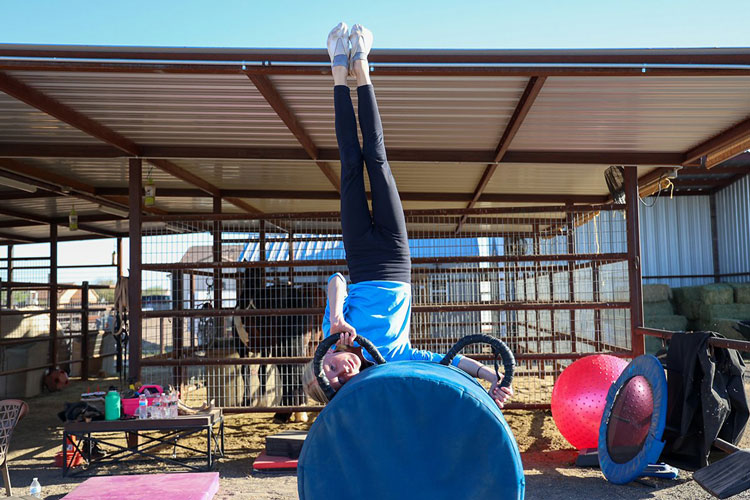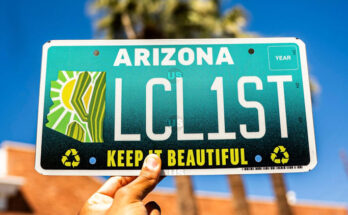Photo By Mary Grace Grabill/Cronkite News: After finding Salt River Vaulters, Allyson Ward’s life changed greatly, giving her the ability to better cope with her disabilities. After just two months of practicing, Ward was able to stand on the horse.
SAN TAN VALLEY – The first time Jarred Sallus tried equestrian vaulting, he was with his girlfriend, Kadriya Musina, in her native Russia. Within eight hours of his arrival, he was upside down on a horse.
Sallus returned to the stables the next day, ready to learn more about the sport. His excitement led to the couple co-founding Salt River Vaulters in 2019, a non-profit organization that makes it possible for children or adults with disabilities to participate in equine therapy and therapeutic vaulting.
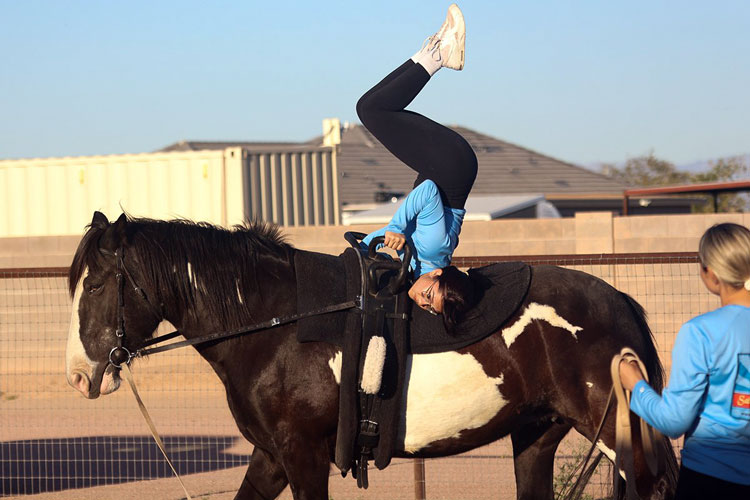
Sallus, whose early life struggles with behavioral issues saw him sent to boarding school in Sedona, soon found that horses were an avenue that could lead toward a peaceful, more tranquil life. Following boarding school, Sallus moved back to California, starting his journey with Luna, a horse that is now used at Salt River Vaulters.
“I’ve seen how it helps me and I can see sometimes how it helps students that we have. I can see that they just have an instant change,” Sallus said. “They get up on a horse and they’re having full-blown conversations with the horse. They’re happy. It’s just amazing to see an instant change in students.”
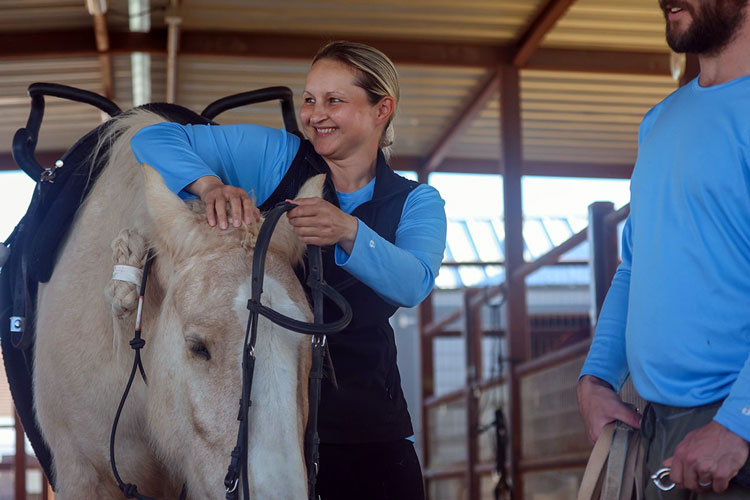
Equestrian vaulting is “essentially gymnastics on horseback,” Sallus said, and competition includes compulsories and freestyle options. Salt River Vaulters start their beginners with compulsory exercises including vault-on, flag, stand and flank, moves that can help the athletes’ physical and mental growth. Pas de Deux features two people on a horse and also includes aspects of gymnastics in the routine.
Athletes can participate in the competition as an individual or with a team and are scored on their flexibility and balance, as well as covering all areas of the horse. The horse is judged on its gait and quality, and each athlete must face all four sides of the horse.
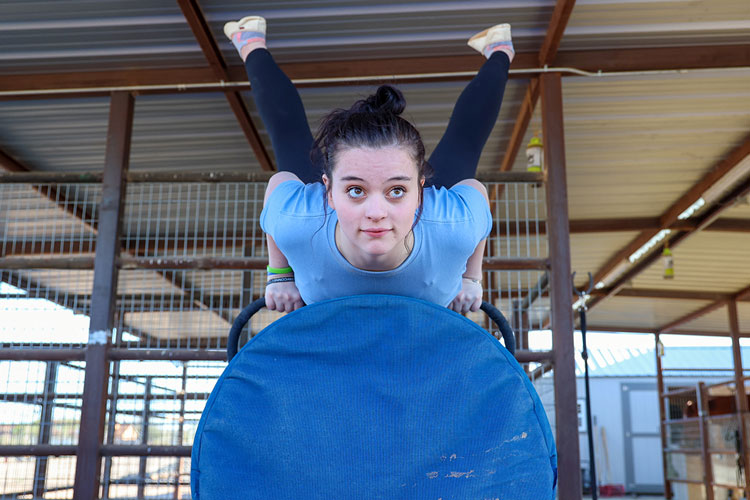
The United States held its first equestrian vaulting competition in 1969, according to US Equestrian, although the sport did not reach Arizona until Salt River Vaulters. When the couple returned from Russia, Sallus said he felt a void, realizing “there’s nothing here.”
After searching for a comfortable and safe area for the vaulters, Musina and Sallus, now married, found running their non-profit organization from their backyard in San Tan Valley was best, which also allowed them to expand the number of classes.
“I love helping the kids with disabilities. I think it’s probably my favorite thing,” Sallus said. “They just have a joy with them that they bring to lessons, and just their smile.”
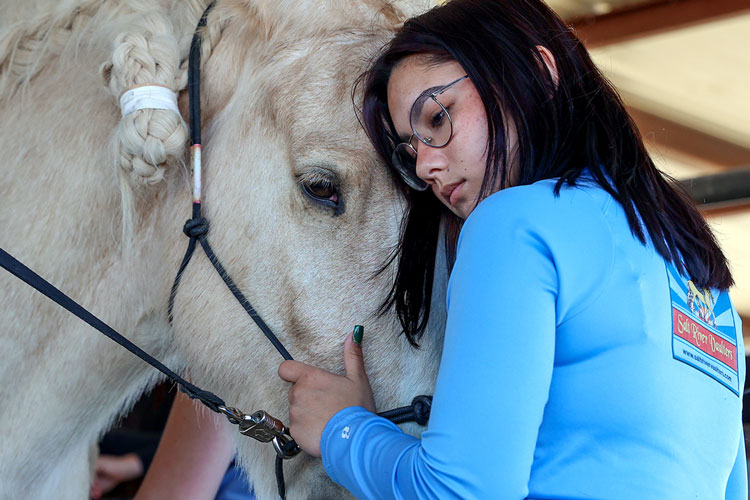
It’s not about making money, and it’s more than a business, Musina-Sallus said. “It’s about changing the lives of kids and adults and people in general because horses are changing lives,” she said.
“I like to share our horses, I like to share our place with people who really need it. Because a lot of people, they can’t find their place in life and they are really struggling. But I want them to know that they are always welcome here.”
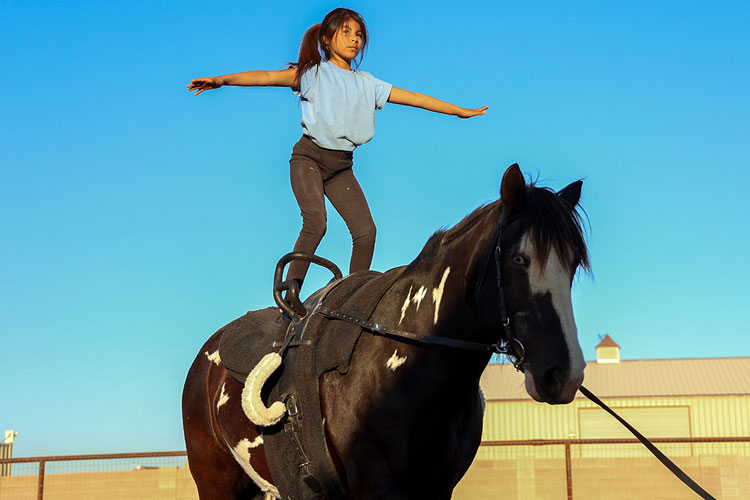
Allyson Ward, 16, has sensory processing disorder and autism, which makes attending school, dressing herself, and finding the motivation to get through the day difficult. But two months ago, Ward’s life gained purpose when she discovered Salt River Vaulters.
“For me and for Allyson, it’s been life-changing because from the moment she stepped foot on the property and was able to connect with the horses, we’ve been able to go to school and we’ve been able to get dressed and we’ve been able to function at a typical level,” Allyson’s mother, Amy, said.
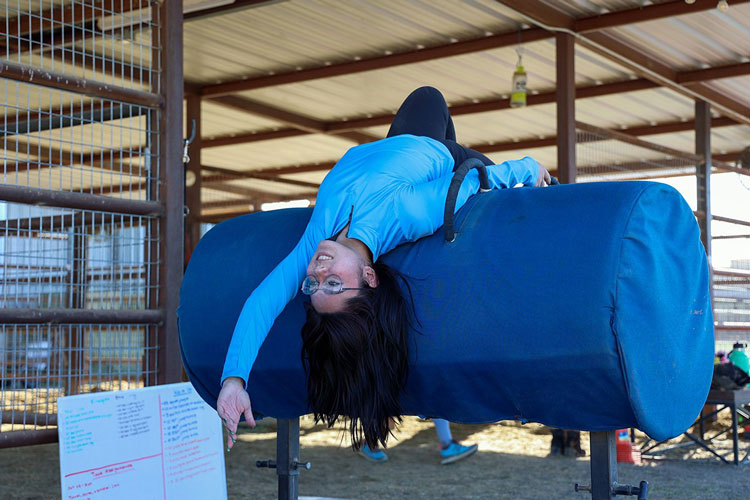
Building a powerful connection with horses has enabled Allyson to emerge from her shell.
She has also developed a strong connection with Musina-Sallus and the horses.
“Me and my coach have become really close,” she said. “And then I’m really close with the horse Jewel. She’s my favorite.”(sic)
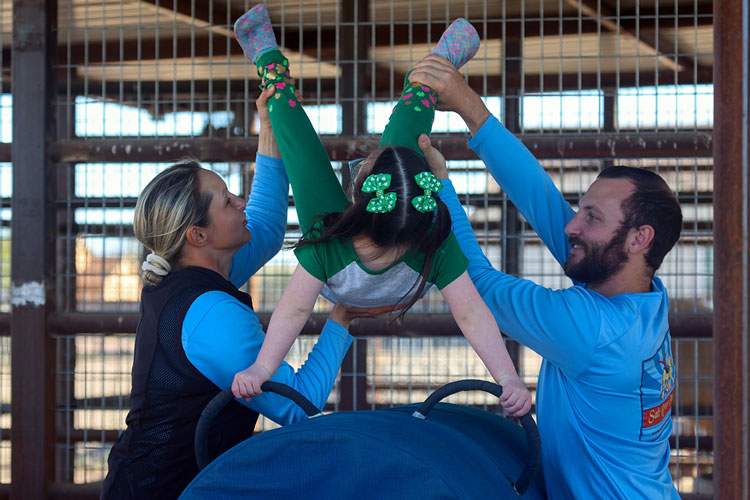
Allowing participants to grow physically and mentally, Musina-Sallus said, it also helps their communication skills.
“Vaulting is a team sport. You have a horse, you have a ledger, and you have teammates. You have to communicate, you have to understand each other, you have to trust each other,” Musina-Sallus said.
“The main reason is to help people in general with disabilities and able-bodied to have experience, to know what a horse vaulting and therapy and communication is with the horse,” Musina-Sallus said. “In general, how a horse can affect your life and help you because it’s a whole another energy that comes from the horse. And it kind of changes you.”
